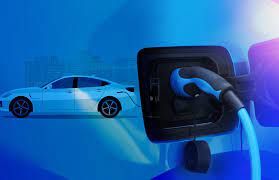Advancements in charging technology for electric vehicles (EVs) are playing a crucial role in addressing some of the limitations and concerns associated with charging infrastructure. Here are some notable advancements:
- Fast Charging: Fast charging technology enables rapid charging of EV batteries, significantly reducing charging times. The introduction of high-power charging stations, often referred to as DC fast chargers or Level 3 chargers, allows EVs to charge at a much higher rate than standard Level 2 chargers. These fast chargers can provide a substantial amount of range in a short amount of time, typically within 30 minutes to an hour, depending on the vehicle and charger specifications.
- Ultra-Fast Charging: Ultra-fast charging is the next level of charging technology, capable of delivering even higher power levels to EV batteries. These chargers, often utilizing ultra-high-voltage systems, can provide charging rates of several hundred kilowatts. Ultra-fast charging stations are still relatively new and are being developed to further reduce charging times and enhance the convenience of EV charging.
- High Power Charging Networks: Charging networks are expanding to provide widespread access to fast and ultra-fast charging stations. Companies such as Tesla, Electrify America, Ionity, and others are investing in building extensive charging networks to support long-distance travel and provide convenient charging options for EV owners.
- Bidirectional Charging (Vehicle-to-Grid): Bidirectional charging technology allows EVs to not only consume electricity but also feed electricity back into the grid. This capability enables EVs to serve as energy storage devices, supporting grid stability and enabling vehicle-to-grid (V2G) applications. V2G technology has the potential to provide grid services, participate in demand response programs, and facilitate renewable energy integration.
- Wireless Charging: Wireless charging, also known as inductive charging or wireless power transfer, eliminates the need for physical cable connections between the charger and the vehicle. This technology uses magnetic fields to transfer energy from a charging pad on the ground to a receiver on the EV. Wireless charging offers convenience and ease of use, as EVs can be charged simply by parking over a charging pad. However, it is currently less efficient than wired charging and requires careful alignment for optimal charging rates.
- Smart Charging and Grid Integration: Smart charging solutions leverage advanced communication and control systems to optimize charging processes. These systems enable features such as load management, demand response, and time-of-use charging, where charging is scheduled during off-peak hours when electricity prices are lower or renewable energy generation is high. Smart charging helps to balance electricity demand, reduce strain on the grid, and maximize the utilization of renewable energy resources.
These advancements in charging technology are enhancing the convenience, speed, and accessibility of EV charging. As the charging infrastructure continues to expand and improve, it is becoming easier for EV owners to charge their vehicles quickly and efficiently, reducing concerns about range anxiety and supporting the widespread adoption of electric vehicles.
SHARE
